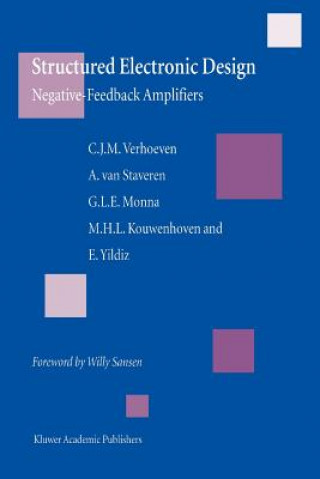
Kód: 01423681
Structured Electronic Design
Autor Chris J.M. Verhoeven, Arie van Staveren, G.L.E. Monna, M.H.L. Kouwenhoven
Analog design is one of the more difficult aspects of electrical engineering. The main reason is the apparently vague decisions an experienced designer makes in optimizing his circuit. To enable fresh designers, like students elec ... celý popis
- Jazyk:
 Angličtina
Angličtina - Väzba: Brožovaná
- Počet strán: 380
Nakladateľ: Springer, Berlin, 2010
- Viac informácií o knihe

199.60 €

Skladom u dodávateľa v malom množstve
Odosielame za 12 - 15 dní
Potrebujete viac kusov?Ak máte záujem o viac kusov, preverte, prosím, najprv dostupnosť titulu na našej zákazníckej podpore.
Pridať medzi želanie
Mohlo by sa vám tiež páčiť
-

Polymer Nanoclay Composites
140.44 € -

History of Rasselas, Prince of Abissinia
11.01 € -23 % -

Rationalism of Georg Lukacs
69.96 € -

Fall and Rise of China
29.21 € -

Worlds of Carol Shields
45.19 € -

Nerve
11.21 € -13 % -

Cooking Apicius
17.58 € -16 % -

Halo
11.01 € -23 % -

Oxford Handbook of Post-Keynesian Economics, Volume 2
249.55 € -

How to Make a Treadle-Operated Wood-Turning Lathe
22.64 € -

Plato's Ethics
103.43 € -

Futility
7.37 € -

100 Years of Swiss Graphic Design
58.03 € -

International Aspects of Child Abuse & Neglect
270.48 € -12 % -

Moving Working Families Forward
40.34 € -

Discover Your Goal
10.71 € -4 % -

Die Politiker
10.51 € -

BMW 3er Reihe E90 3/05-1/12
33.66 € -2 % -

PHP-MVC-Frameworks. Web Application Frameworks fur die serverseitige Scriptsprache PHP
100.70 € -

Ausländerklauseln im organisierten Freizeitsport.
84.32 € -

Roppongi
4.74 € -5 %
Darujte túto knihu ešte dnes
- Objednajte knihu a vyberte Zaslať ako darček.
- Obratom obdržíte darovací poukaz na knihu, ktorý môžete ihneď odovzdať obdarovanému.
- Knihu zašleme na adresu obdarovaného, o nič sa nestaráte.
Viac informácií o knihe Structured Electronic Design
Nákupom získate 499 bodov
 Anotácia knihy
Anotácia knihy
Analog design is one of the more difficult aspects of electrical engineering. The main reason is the apparently vague decisions an experienced designer makes in optimizing his circuit. To enable fresh designers, like students electrical engineering, to become acquainted with analog circuit design, structuring the analog design process is of utmost importance. §Structured Electronic Design: Negative-Feedback Amplifiers presents a design methodology for negative-feedback amplifiers. The design methodology enables to synthesize a topology and to, at the same time, optimize the performance of that topology. §Key issues in the design methodology are orthogonalization, hierarchy and simple models. Orthogonalization enables the separate optimization of the three fundamental quality aspects: noise, distortion and bandwidth. Hierarchy ensures that the right decisions are made at the correct level of abstraction. The use of simple models, results in simple calculations yielding maximum-performance indicators that can be used to reject wrong circuits relatively fast. §The presented design methodology divides the design of negative-feedback amplifiers in six independent steps. In the first two steps, the feedback network is designed. During those design steps, the active part is assumed to be a nullor, i.e. the performance with respect to noise, distortion and bandwidth is still ideal. §In the subsequent four steps, an implementation for the active part is synthesized. During those four steps the topology of the active part is synthesized such that optimum performance is obtained. Firstly, the input stage is designed with respect to noise performance. Secondly, the output stage is designed with respect to clipping distortion. Thirdly, the bandwidth performance is designed, which may require the addition of an additional amplifying stage. Finally, the biasing circuitry for biasing the amplifying stages is designed. §By dividing the design in independent design steps, the total global optimization is reduced to several local optimizations. By the specific sequence of the design steps, it is assured that the local optimizations yield a circuit that is close to the global optimum. On top of that, because of the separate dedicated optimizations, the resource use, like power, is tracked clearly. §Structured Electronic Design: Negative-Feedback Amplifiers presents in two chapters the background and an overview of the design methodology. Whereafter, in six chapters the separate design steps are treated with great detail. Each chapter comprises several exercises. An additional chapter is dedicated to how to design current sources and voltage source, which are required for the biasing. The final chapter in the book is dedicated to a thoroughly described design example, showing clearly the benefits of the design methodology. §In short, this book is valuable for M.Sc.-curriculum Electrical Engineering students, and of course, for researchers and designers who want to structure their knowledge about analog design further.Analog design is one of the more difficult aspects of electrical engineering. The main reason is the apparently vague decisions an experienced designer makes in optimizing his circuit. To enable fresh designers, like students electrical engineering, to become acquainted with analog circuit design, structuring the analog design process is of utmost importance. §Structured Electronic Design: Negative-Feedback Amplifiers presents a design methodology for negative-feedback amplifiers. The design methodology enables to synthesize a topology and to, at the same time, optimize the performance of that topology. §Key issues in the design methodology are orthogonalization, hierarchy and simple models. Orthogonalization enables the separate optimization of the three fundamental quality aspects: noise, distortion and bandwidth. Hierarchy ensures that the right decisions are made at the correct level of abstraction. The use of simple models, results in simple calculations yielding maximum-performance indicators that can be used to reject wrong circuits relatively fast. §The presented design methodology divides the design of negative-feedback amplifiers in six independent steps. In the first two steps, the feedback network is designed. During those design steps, the active part is assumed to be a nullor, i.e. the performance with respect to noise, distortion and bandwidth is still ideal. §In the subsequent four steps, an implementation for the active part is synthesized. During those four steps the topology of the active part is synthesized such that optimum performance is obtained. Firstly, the input stage is designed with respect to noise performance. Secondly, the output stage is designed with respect to clipping distortion. Thirdly, the bandwidth performance is designed, which may require the addition of an additional amplifying stage. Finally, the biasing circuitry for biasing the amplifying stages is designed. §By dividing the design in independent design steps, the total global optimization is reduced to several local optimizations. By the specific sequence of the design steps, it is assured that the local optimizations yield a circuit that is close to the global optimum. On top of that, because of the separate dedicated optimizations, the resource use, like power, is tracked clearly. §Structured Electronic Design: Negative-Feedback Amplifiers presents in two chapters the background and an overview of the design methodology. Whereafter, in six chapters the separate design steps are treated with great detail. Each chapter comprises several exercises. An additional chapter is dedicated to how to design current sources and voltage source, which are required for the biasing. The final chapter in the book is dedicated to a thoroughly described design example, showing clearly the benefits of the design methodology. §In short, this book is valuable for M.Sc.-curriculum Electrical Engineering students, and of course, for researchers and designers who want to structure their knowledge about analog design further.
 Parametre knihy
Parametre knihy
Zaradenie knihy Knihy po anglicky Computing & information technology Graphical & digital media applications Computer-aided design (CAD)
199.60 €
- Celý názov: Structured Electronic Design
- Autor: Chris J.M. Verhoeven, Arie van Staveren, G.L.E. Monna, M.H.L. Kouwenhoven
- Jazyk:
 Angličtina
Angličtina - Väzba: Brožovaná
- Počet strán: 380
- EAN: 9781441953926
- ISBN: 1441953922
- ID: 01423681
- Nakladateľ: Springer, Berlin
- Hmotnosť: 575 g
- Rozmery: 235 × 155 × 21 mm
- Dátum vydania: 05. November 2010
Obľúbené z iného súdka
-

Autodesk Revit 2020 for Architecture - No Experience Required
47.62 € -5 % -

NX 12 Tutorial
23.96 € -3 % -

Tinkercad For Dummies
20.92 € -19 % -

Mastering Autodesk Revit 2020
57.12 € -18 % -

Autodesk Inventor Exercises
74.72 € -

AutoCAD 2020 Instructor
86.75 € -

Autodesk Maya 2018 Basics Guide
95.35 € -

Autodesk Fusion 360 Basics Tutorial
20.92 € -19 % -

FreeCAD 0.18 Basics Tutorial
22.03 € -4 % -

CorelCAD 2020 Basics Tutorial
16.37 € -4 % -

3D CAD with Autodesk 123D
19.91 € -6 % -

Kelly L. Murdock's Autodesk 3ds Max 2020 Complete Reference Guide
85.33 € -

CAM Design and Manufacturing Handbook
153.49 € -
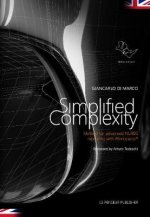
Simplified Complexity
54.49 € -
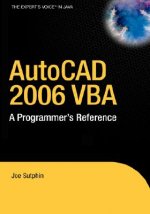
AutoCAD 2006 VBA
150.25 € -

SolidWorks Simulation 2019 Black Book
67.03 € -

Kelly L. Murdock's Autodesk 3ds Max 2017 Complete Reference Guide
106.06 € -
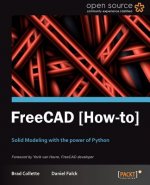
FreeCAD How to
23.65 € -

AutoCAD 2022 for the Interior Designer
81.19 € -

AutoCAD Civil 3D 2016 Essentials - Autodesk Official Press
41.55 € -20 % -

Designspark Mechanical 4.0 Basics Tutorial
18.29 € -4 % -

Autodesk AutoCAD Architecture 2020 Fundamentals
71.38 € -

ANSYS Tutorial Release 2020
76.54 € -

Mastering AutoCAD Civil 3D 2016 -Autodesk Official Press
76.64 € -3 % -

Parametric Modeling with Siemens NX (Spring 2019 Edition)
80.08 € -

FreeCAD 0.18 Learn By Doing
18.60 € -19 % -

Advanced Mathematical Methods for Scientists and Engineers I
82.30 € -

Finite Element Simulations with ANSYS Workbench 2019
93.63 € -

Autodesk Vault Workgroup 2022
104.65 € -

Learning Autodesk Inventor 2017
89.18 € -

Automating SOLIDWORKS 2021 Using Macros
87.76 € -

CATIA V5 Tutorials Mechanism Design & Animation Release 21
87.15 € -

Autodesk Revit 2018 Architecture Basics
84.63 € -

Mastering AutoCAD 2019 and AutoCAD LT 2019
66.02 € -5 % -
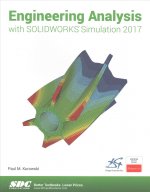
Engineering Analysis with SOLIDWORKS Simulation 2017
93.83 € -

NX for Beginners
41.45 € -2 % -

Cad/cam With Creo Parametric: Step-by-step Tutorial For Versions 4.0, 5.0, And 6.0
62.08 € -

Parametric Building Design Using Autodesk Maya
70.87 € -

Mechanism Design and Analysis Using Creo Mechanism 3.0
72.39 € -

Mastering AutoCAD 2013 and AutoCAD LT 2013
60.76 € -13 % -

Kelly L. Murdock's Autodesk 3ds Max 2018 Complete Reference Guide
113.75 € -

Programming and Engineering Computing with MATLAB 2019
82.50 € -

Managing and Visualizing Your BIM Data
56.01 € -

Finite Element Simulations with ANSYS Workbench 2021
99.90 € -
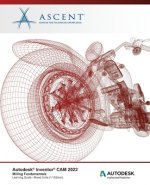
Autodesk Inventor CAM 2022
87.86 € -

AutoCAD 2021 For Beginners
36.19 € -3 % -

Discussing Design
33.76 € -6 % -
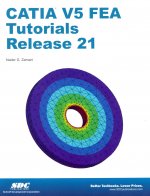
CATIA V5 FEA Tutorials Release 21
87.15 € -

Solid Edge St8 Basics and Beyond
38.52 €
Osobný odber Bratislava a 2642 dalších
Copyright ©2008-24 najlacnejsie-knihy.sk Všetky práva vyhradenéSúkromieCookies


 21 miliónov titulov
21 miliónov titulov Vrátenie do mesiaca
Vrátenie do mesiaca 02/210 210 99 (8-15.30h)
02/210 210 99 (8-15.30h)